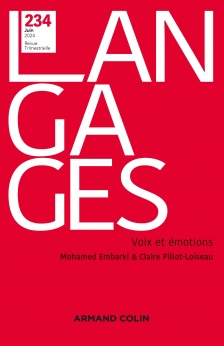
LANGAGE S N° 234 (2/2024)
Pour acheter ce numéro, contactez-nous
Recevez les numéros de l'année en cours et accédez à l'intégralité des articles en ligne.
L’article s’intéresse à la transformation de l’expression émotionnelle spontanée qui se manifeste avec les interjections dans la voix parlée, en expression artistique volontaire, fondée sur les observations du comportement naturel et involontaire des locuteurs. Après une introduction dans les théories du XVIIIe siècle à ce sujet, nous opposerons les caractéristiques indiquées par les grammairiens et rhétoriciens pour les interjections liées à une certaine émotion et les explications dans les traités s’adressant aux artistes. Un corpus de compositions vocales françaises toujours de la même époque nous aide à comprendre que le traitement des interjections dans les compositions correspond aux observations pour les voix parlée et déclamée et qu’elle peut permettre aux chanteurs de profiter pleinement de la base musicale pour l’expression personnelle de l’émotion demandée.
The article focuses on the transformation of the spontaneous emotional expression that manifests itself with the interjections in the spoken voice, into voluntary artistic expression, based on observations of the natural and involuntary behavior of the speakers. After an introduction to the 18th century theories on this subject, we will oppose the characteristics indicated by grammarians and rhetoricians for interjections linked to a certain emotion, and the explanations in treatises addressed to artists. A corpus of French vocal compositions from the same period helps us to understand that the treatment of interjections in the compositions corresponds to the observations for the spoken and declaimed voices and that it can allow singers to take full advantage of the musical basis for the personal expression of the emotion requested.
